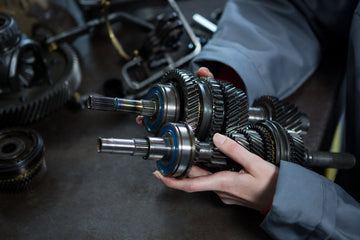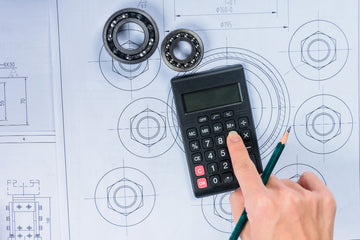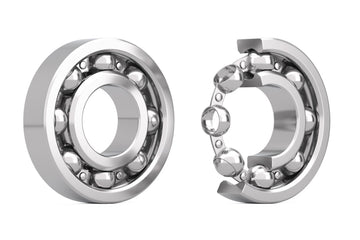Ball bearings have been vital in the automotive sector, which needs reliability, efficiency and durability demanded by the new cars. Since they improve performance of any mechanical system among other things, these are remarkable parts with small sizes but significant powers in the effective operation of different machines. The popularity of ball bearings in automobiles has led to its use in production and design operations that need ball bearings.
Why Ball Bearings Are the Unsung Heroes of Automotive Innovation
Although they are small ball bearings sizes, have an immeasurable impact on the present-day automotive engineering. They are unobtrusively ensuring every movement in virtually all motions functions of a vehicle, whether these are performance-critical systems, such as the engine or the transmission, or comfort-enhancing features, such as HVAC and power accessories.
They can resist high-velocity motion, tense surroundings, and decreases friction, and that is why they become one of the most useful parts in any vehicle. Within the electric and autonomous vehicle industry trend, the automotive sector demand of more advanced, efficient, and compact bearing solutions is also likely to increase in the future.
Engine Systems and Powertrain Efficiency
Use of ball bearings in the engine and powertrain components is one of the most significant uses of the ball bearings. They are embedded in the crank shaft, camshaft, and turbo systems to sort out smooth rotation and minimum resistant work. This makes it able to allow more efficiency in its engine and fuel economy, which are crucial in the modern environmentally aware auto industry.
In the same way as the reduction of noise levels, ball bearings add to a quieter functioning and less vibration, bettering comfort of the drivers and other general car functionality. They are accurate and strong and therefore can alleviate internal engine components misaligned and damaged due to wear.
Function of the Transmission and Gearbox
Other vital areas in which uses of ball bearings come in handy are transmissions. Ball bearings in manual and direct transmission, as well as gear shift, embrace the use of ball bearings to hold shafts and limit frictional forces. They enable the transmission system to work in an effective manner whereby electrical energy is extracted in the engine and directed to the wheels with minimal loss of energy.
Since transmissions deal with complicated gear changes, bearings have to be designed with precision to ensure they are stable when facing high torques. Ball bearings facilitate driving dynamics and extend the life of transmissions systems by facilitating easier gear shifting and by minimizing mechanical objections.
Wheel Hubs and Suspension systems
Ball bearing is used in wheel hubs to provide stability and efficiency in rotation of wheels. These bearings ensure that there is less friction between an axle and the wheel hub and these not only cushion driving but also increase safety by improving vehicle controlling. Visually sound bearings on this part is important to eliminate heating up and concerns with brakes.
Ball bearing is also used in the suspension system. They cushion shock and minimize vibration and offer a smoother ride when going on uneven surfaces. In new cars, more sophisticated suspension systems are relying more and more on the technology of bearings to accommodate newer dynamic ride functions such as active dampers and electronic stability.
Control Systems and Steering Mechanisms
The other major application of the ball bearings in the automotive industry is in steering systems. Bearings ensure a smooth action of steering columns where the control of a vehicle is efficiently precise. The importance of low friction and high durability bearings is more critical with the emergence of the electric power steering.
With the increased sophistication of vehicles ball bearings also appear in steering assist motors and electronic control modules. These make them effective in enhancing the functionality of steering systems and also preventing fatigue caused by long distance commuting.
Interior Comfort and HVAC Systems
In addition to mechanical systems, other automotive applications with ball bearings are in automotive HVAC, e.g., when using blower motors in automotive air conditioning and ventilation fans. They provide quality air flow in a very quiet and efficient manner which helps the passengers get comfortable. These systems utilize high-quality bearings, which lack the need of lubrication therefore maintenance cost is minimized.
Seat adjustment motors, window regulators, and sunroofs bearings are yet another indication of the extent to which this part is ingrained in the car design. Such comfort and convenience benefits will require low-noise and high-performance bearings to run effectively in the long term.
Future Trends and Evolving Technologies
The forecast of high-performance ball bearings keeps rising as electric vehicles (EVs) and hybrid models become more popular. New features that are presented by these developed vehicles are increased rotations speeds and increased packaging which require sophisticated bearing solutions.
The rising demands are being met by the discovery of new material science and lubrication technology in ball bearing. Moreover, the independence of the supposed future of vehicular environments and the deployment of advanced safety solutions are bound to increase the range of uses of ball bearings to new electronic platforms and motion control modules.
Effect of Ball Bearings on vehicle life and durability
High quality ball bearings in automotive systems is the one thing that has an immediate effect on the durability and long term reliability of automotive systems. It is in the engine, the transmission or the wheel assemblies that each one of them depends on the precision bearing systems to work smoothly under stresses and endure over prolonged periods of time.
When bearing manufacturers pick bearing of high grades and make sure they are installed correctly, this leads to reduced maintenance demand and less failure of its components. To car owners, it will mean lower repair costs, improved mileage and a well-refined driving experience. The advantages are even more numerous when it comes to commercial and fleet vehicles, as reliable bearings allow reducing the time on repair and increase work efficiency.





